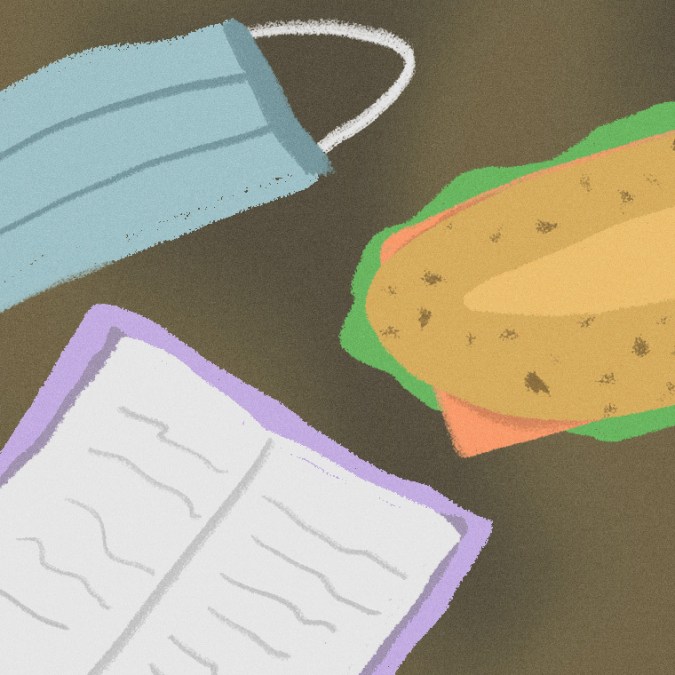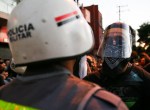It is undeniable—the energy around this moment is different than that of protests of the past. Maybe it was the pandemic-induced months of isolation and quarantine, or the unprecedented economic precarity it has caused, or the astounding death toll which disproportionately affected Black people and immigrant communities. But as the horrifying video of George Floyd’s excruciating death at the hands of Minneapolis officers spread and the story of Breonna Taylor shot by police in her Louisville apartment gained traction, explosive uprisings began popping up across the country.
This time, the familiar hand-wringing among politicians and pundits about solutions to systemic racism—the other American pandemic—are ringing shallow to a public that just five years ago witnessed the uprisings that led to the creation of Black Lives Matter. Another round of reforms will not cut it. Ultimately, there is a growing consensus among organizers, protesters and the public at large that policing itself is at the root of the problem.
Instead of banning chokeholds, beginning pattern-or-practice investigations of police departments through the Department of Justice, or enacting any number of other interventions that have been implemented throughout the years without an end to the extrajudicial murder of Black people at the hands of the state, organizers are now demanding interventions that would shrink the power and scope of policing itself. They are demanding to defund the police.
But what does that now ubiquitous phrase mean?

For many—even those of us who have never felt safe around police—the idea of a world with less or no police can initially sound impossible. Unsafe, even.
“People are fed up.”
But, at its core, understanding the demand to defund the police requires a close look at what conditions actually create safety in our society—think access to safe and stable housing, universal access to healthcare, etc.—and those that don’t.
Throughout U.S. history, policing has been designed and implemented—both explicitly and implicitly—to target Black people, meaning that rather than offering safety, police instead have been sources of violence, danger and death. For those who have considered the police a safety net, on the other hand, it’s important to recognize that that safety is at the direct expense of those who have long suffered at their hands. When organizers talk about reallocating resources from police departments to community needs, they are prioritizing people’s basic needs and envisioning models of safety that work for everyone—not just a privileged few.

The truth is that some of the safest communities in the United States already exist in a mostly police-free reality because they are inhabited by the wealthy, where residents enjoy living wages, access to quality public education and other social goods.
“If we put [resources] in the hands of the people who need them,” said Adilka Pimentel of Communities United for Police Reform in New York City, “we wouldn’t even need police. We wouldn’t need them to be here.”

The fact that the current uprisings are taking place in the context of a global pandemic that has decimated Black, immigrant, poor and other marginalized communities across the country presents a tidy case study for the failures of the fiscal prioritization of policing. Because of structural racism, COVID-19 deaths have hit these communities the hardest, with survivors often ending up with thousands of dollars of medical debt, as these populations are also disproportionately uninsured. At the same time, these same communities are facing extreme economic precarity. Politicians tell us time and time again that budgets are in crisis and that we simply cannot provide relief for our people. Some even went as far as to cut essential health programs in the middle of this health crisis.

But when the festering pustule of American racism comes to a head, there seems to be no end to the number of resources that are given to police departments to quiet public despair. What is the cost of paying thousands of officers overtime? Of outfitting them with riot gear? Of flying helicopters over protests for days and days? How much is the American taxpayer footing to deploy the National Guard to terrorize protesters with aggressive tactics that even Guard members are embarrassed to admit they enacted?
In New York City, the Department of Health and Mental Hygiene operates on an annual budget of $1.6 billion dollars. The New York Police Department, on the other hand, operates on an annual budget of approximately $6 billion. While the Mayor’s proposed budget for the fiscal year 2021 proposes devastating cuts to a number of social services, at the time of publication the NYPD proposed budget remains virtually untouched.
As COVID-19 ravages the economy and budget cuts appear to be the reality across all levels of government, it is increasingly clear that the fiscal priorities of the state are geared toward policing and order over community wellness and safety.

“We are really looking at an invest and divest frame,” Pimentel tells Remezcla. “We are calling for $1 billion to be defunded this fiscal year and [put] back to resources that communities need, especially communities that have been destroyed by COVID-19.”
The demand to defund the police is about shrinking the power of police departments and reallocating. For organizers who have long been police abolitionists, it is a step on the way to the complete dismantling of policing as we know it, with the reallocation of funds currently used for policing to be funneled toward meeting basic needs and—in a world without police—alternative community safety strategies.
“How much money does it cost to put an officer in riot gear vs a nurse in PPE?” Pimentel asks. “People died because of this. The people are feeling fed up.”





